The Edwardian Era was a great time for fashion! After the outward social stiffness of the Victorian Era, King VII came onto the stage with a bit of flair and a more relaxed approach, and things slowly started to evolve. With the new century also came a desire for innovation, and designers became increasingly inventive with each passing year. With the willingness that women had to experiment with new styles, Edwardian fashion became full of the unexpected.
So what would an Edwardian woman most want to have in her wardrobe? I have selected a few of my favorite Edwardian fashions for each time of day and explain how they came to be staples of the early part of the 20th century.
Attending an Edwardian-themed event? Download our getting-ready guide here.
Morning
The bloused bodice
While the majority of women’s clothing in the Victorian Era used a fitted bodice, the blouse became a wardrobe staple in the first decade of the new century and was not meant to hug the body at all. As we will see when exploring the S-silhouette that was so popular during these years, tops, especially those worn during the day, were meant to poof out from the chest.
Ladies’ etiquette and fashion manuals often suggested a blouse and skirt for morning wear and around the house. A blouse for this purpose would have more often than not been white or cream-colored and made of simple cotton, flannel, or silk. While the colors would have been kept simple, the design was anything but. A typical Edwardian blouse had a high collar, ¾ length or full-length sleeves with dainty cuffs, inserted lace or applique near the collarbone, multiple layers of pin tucking, and lace inserts running down the sleeves. The one to the right (by Recollections!) is a good example.
Most telling is the closures on so many Edwardian blouses. They often closed with buttons or hooks, in the back, and a lot of them. I viewed many such tops for this post and it wasn’t at all uncommon for a blouse to have 15 or more hooks or buttons in the back. This helps us to see that the lifestyle of a middle or upper-class woman of the time included having a lady’s maid or other female staff in the home.
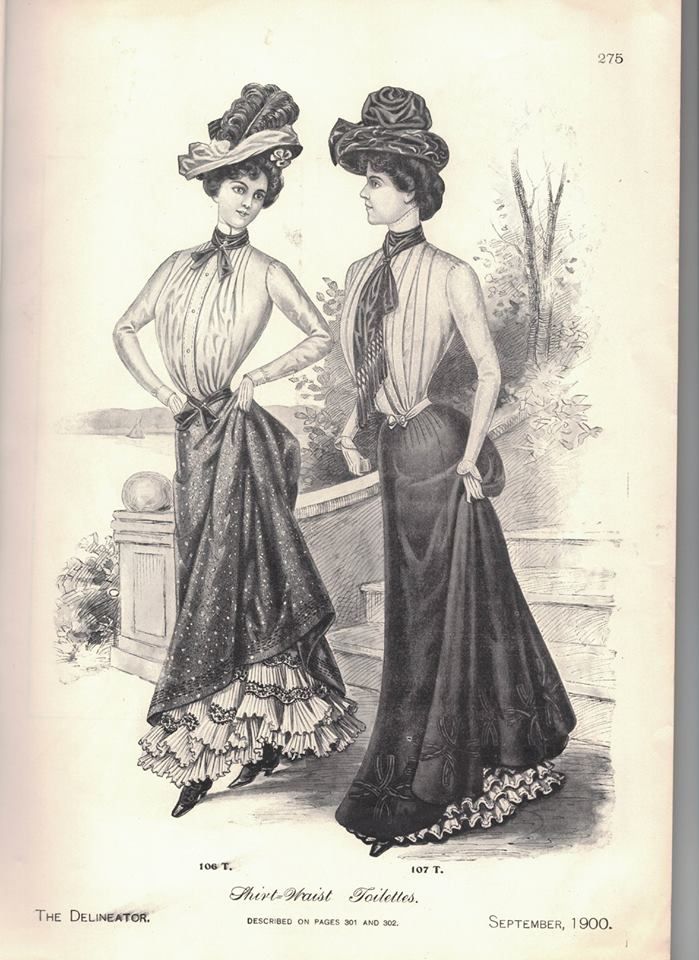
The tailored skirt
A blouse was worn with a narrow, tailored skirt and sometimes a belt. The skirts were often made of wool, fastened below the bust with hooks, and extended to the ankles in a wide, circular hem. While this outfit sounds particularly hot as I write this with 95-degree temperatures outside, the elaborate and soft blouses do appear to have paired well with these long and simple skirts.
Noon
The S-silhouette makes its entrance
The bell-shaped silhouette made of a tight bust and full skirt dominated much of the Victorian Era. Whether the skirt’s expansion was in the back with the bustle or on the sides with the crinoline, big was more. This preference shifted dramatically in the first decade of the 1900s, leading first to the creation of a new type of corset and then with its demise. First, women’s styles shifted to a preference for the bloused bodice, as seen above, and skirts that emphasized the backside.
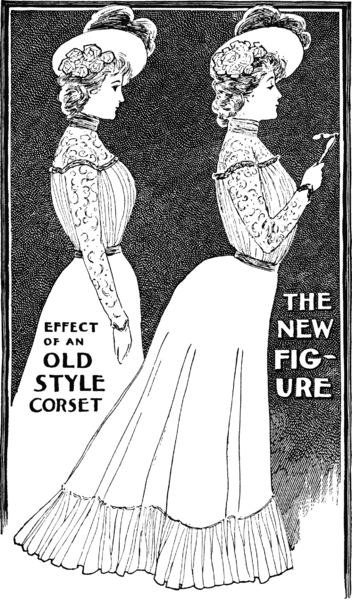
The S-silhouette is best demonstrated in the exaggerated portrayal of the era’s ideal woman, The Gibson Girl. You can see a how idealized it was on a 1900 cover of Good Housekeeping here. In order to achieve this look, the corset was altered to help exaggerate the bust and push the hips back, emphasizing both, whereas the corset had previously been designed to emphasize the fullness of the skirt by diminishing the size of a woman’s hips. This look was easily seen in the “casual” daywear worn by women to run errands, attend social gatherings, or pay visits. Ironically, the next fashion craze to hit the silhouette would be the shapeless gowns that led to the end of the corset’s daily use, never to return for daily use.
The bigger the hat, the better
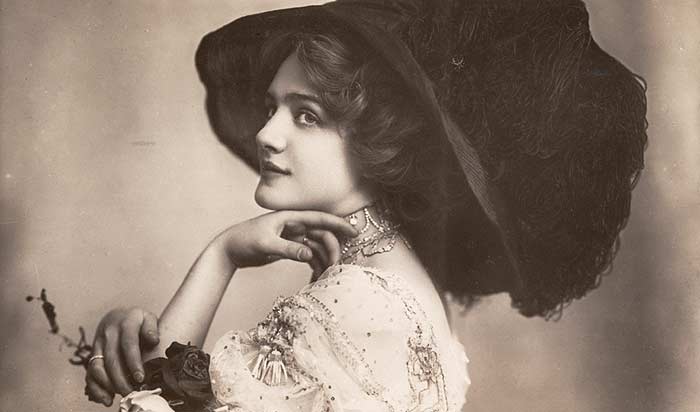
Edwardian women loved their big hats. I often think of the hats worn in the early 1900s as the fashion equivalent of the exaggerated bustles of the Victorian Era or the poufs of 18th century France. It was truly a case of women attempting to get away with the most excess their bodies could permit. And just like the excessive trends that came before them, many in society knew at the time that things had gotten a bit out of hand.
In 1907 The Merry Widow hat was introduced, characterized by a brim with a wingspan like no other. They were also widely popular, quickly becoming status symbols as women sought to also pile the embellishments as high as they could as proof of their fashionability.
The wide and high hats were truly a case of “fashion over function” and would be phased out of style as women continued to make gains in society and enter the public sphere.
Hobble skirts
I’m not sure what would have been more difficult to walk around in, a cage crinoline, or the hobble skirt that came along several decades later. The hobble skirt came in as a trend near the end of the first decade of the 20th century and kept the same standard length of the time, but it grew more narrow as it reached the ankles. In some styles, an extra band of ribbon or stitching was added in the calf area to increase the width. Designer Paul Poiret is said to have claimed with his line of hobble skirts “I freed the bust but I shackled the legs.”

One theory I have about the massive but short-lived trend of the hobble skirt is that it exaggerated the size of the hats even more, similar to the corset exaggerating the size of a woman’s hoop skirt in the mid-1800s. Whatever the case, as the 1900s advanced women wanted to take full steps and the hobble skirt went out of fashion by 1913 or so.
Night
The tea gown
You might be wondering why I am listing the tea gown as a piece of evening wear. This is because unlike one may assume, in Edwardian times tea was held in the early evening after a woman returned home from her activities. She would sometimes have a visitor or two, or simply have the other members of the household join her. Likely because of having been out walking in inhibiting hobble skirts and balancing a Merry Widow hat on her head, before she took tea she would be relieved to get out of her clothes and into something more comfortable. This outfit became known as the tea gown and became a staple of a woman’s wardrobe. She would wear this dress until dinner if she was expecting guests or may remain in it all night if no company was joining. (This use of the tea gown is different from what was considered a tea gown in Victorian times.)
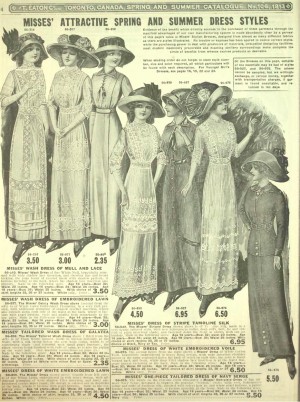
Photo source: Vintage Dancer
The tea gown (or tea dress) was made of soft fabrics, with pretty folds, dainty sleeves, rows of lace, and a loose waist. It is often compared to the country dress, or chemise a la reine, famously worn by Marie Antoinette and other members of French nobility while away from Versaille. One highlight of the Edwardian tea gown is that it was not meant to be worn with a corset, yet another trend leading to the end of binds.
I love this trend and the idea of changing into a lovely soft dress to take tea in the early evening.
The lampshade tunic
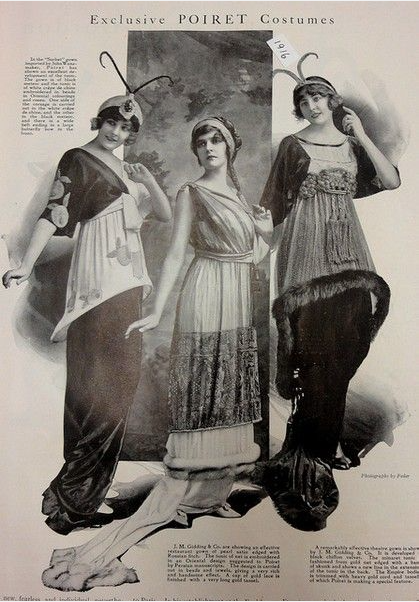
If you were going to a social function at night, which was commonplace for upper-class Edwardians, you would still be expected to dress quite formally. It is in formalwear that we again see Poiret’s influence, especially with the lampshade tunic that hit the scene in 1913. This style was made of a light or even sheer hip-length tunic that was worn over a narrow skirt or even “Harem pants” inspired by the designer’s love of Orientalist themes.
This style of dress was also worn without a corset and would inspire many more loose-fitting evening gowns to come over the next two decades.
What is your favorite style worn by Edwardian women?
Create your own Edwardian ensemble:
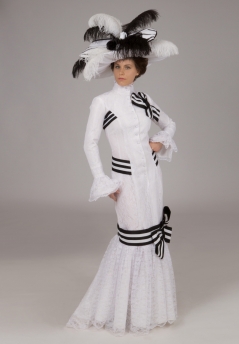

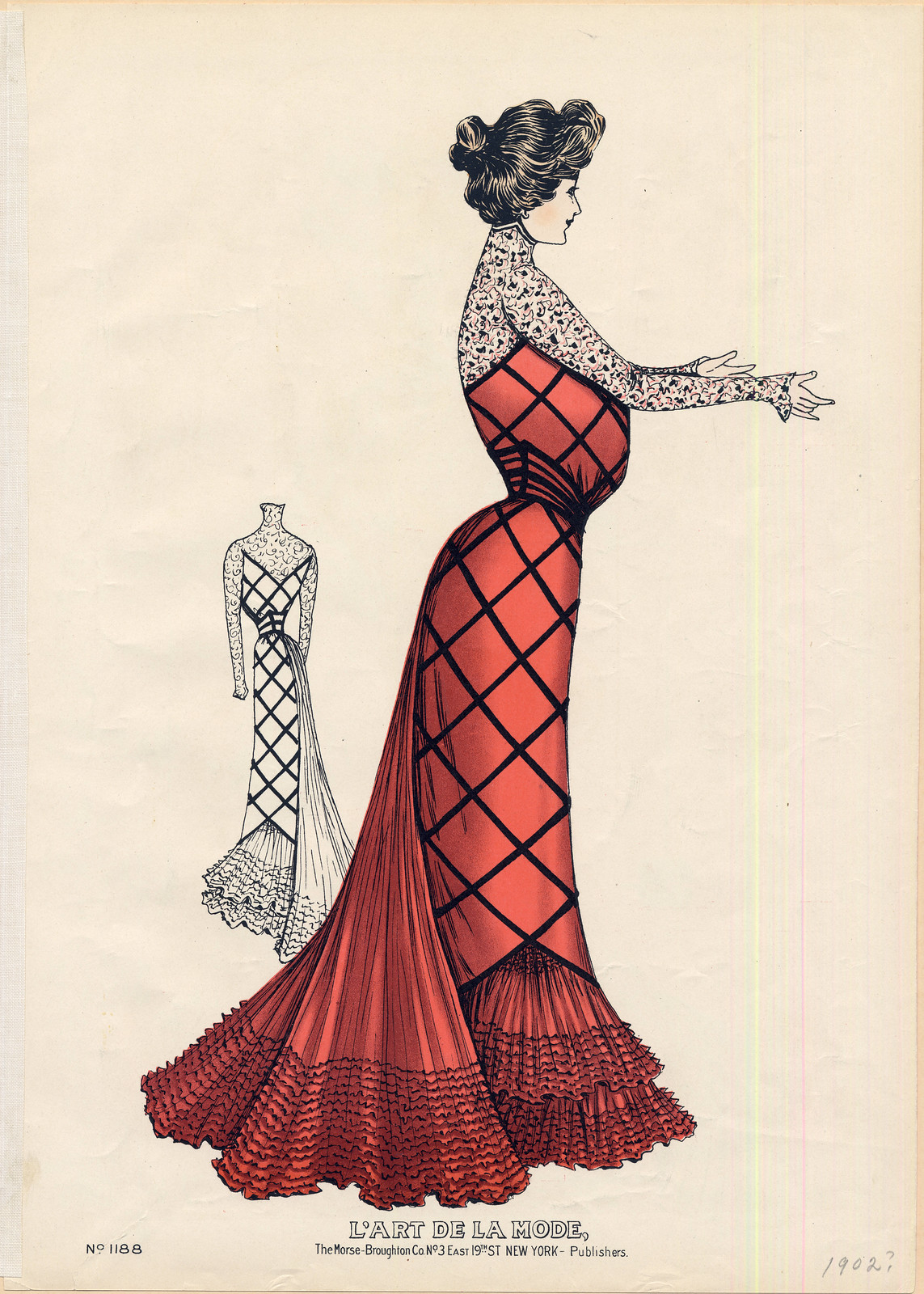
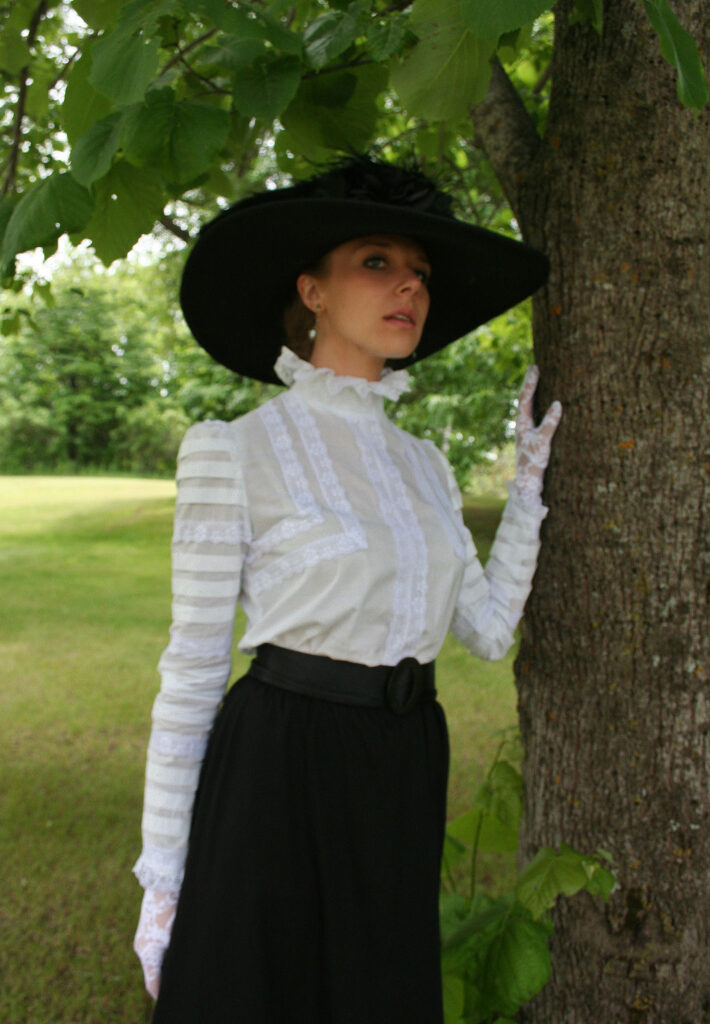
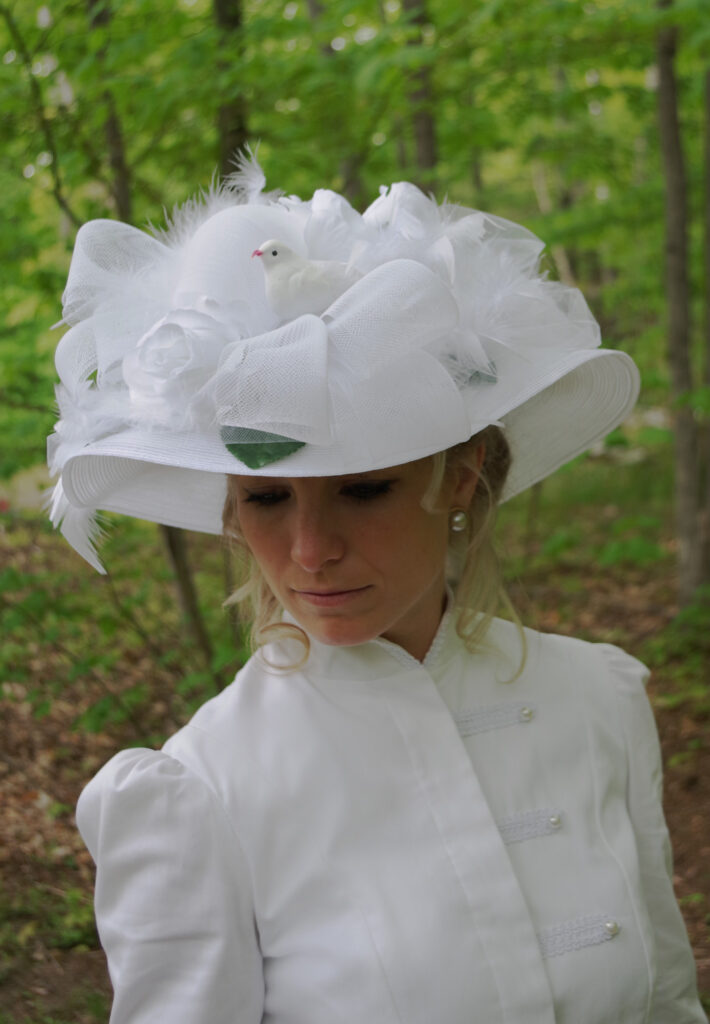

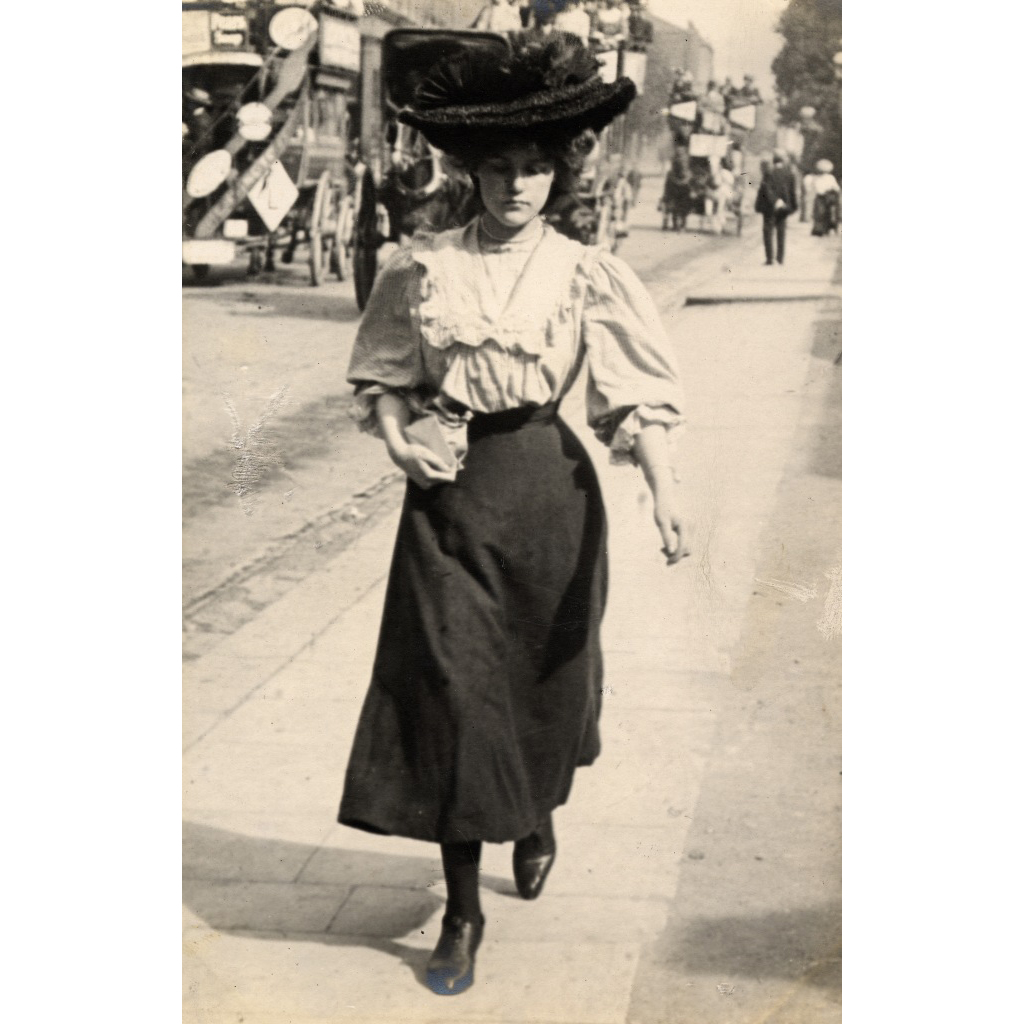
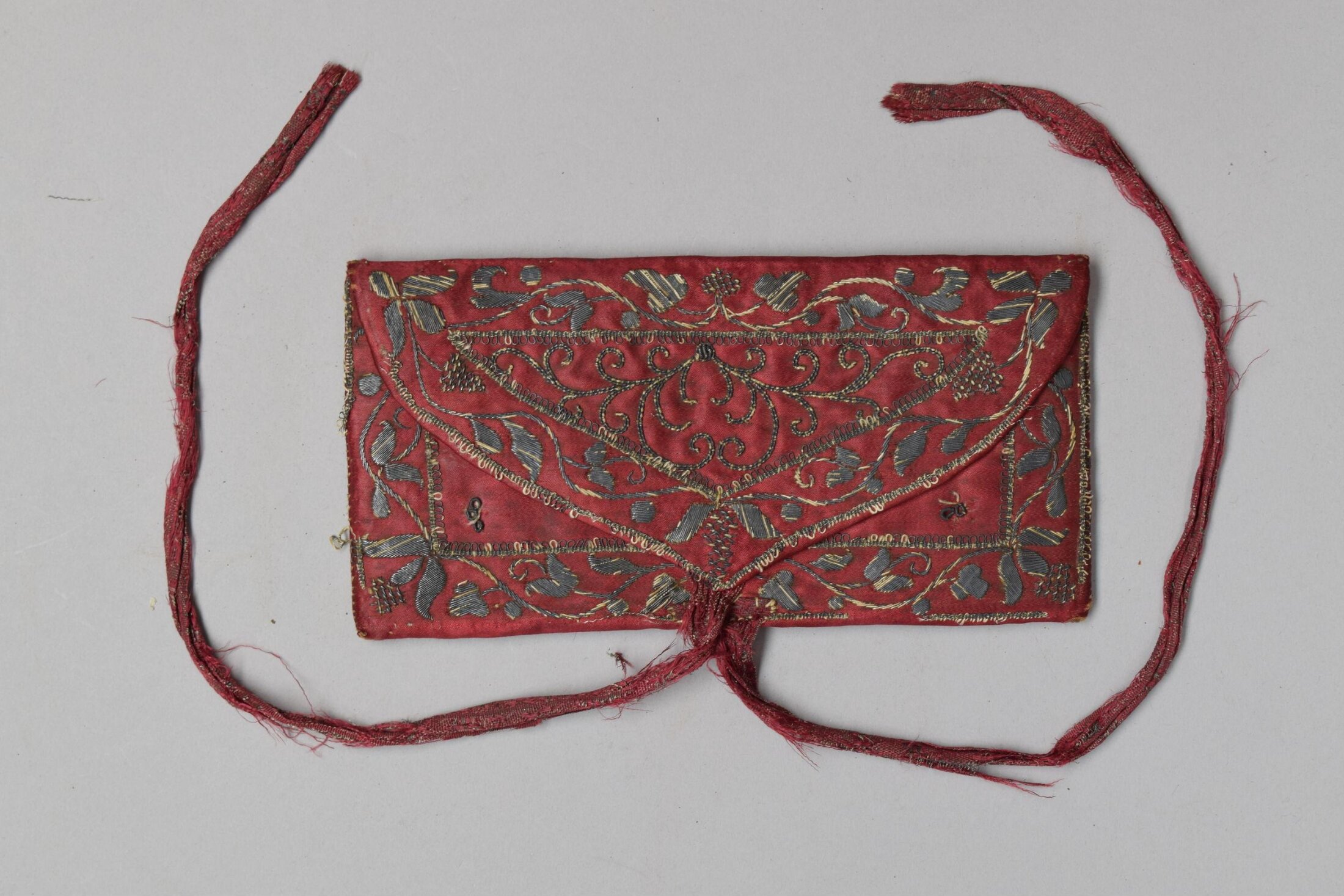
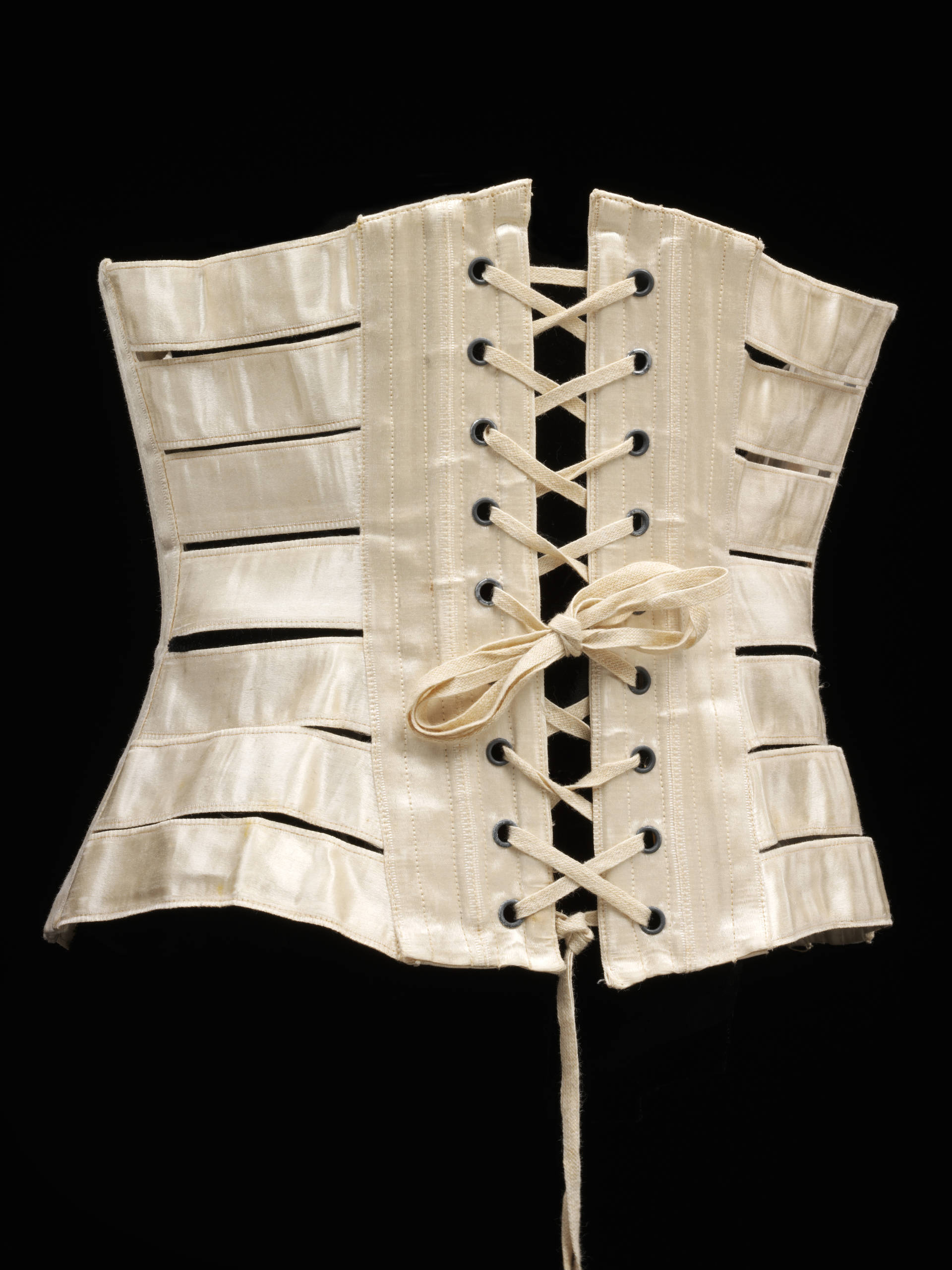
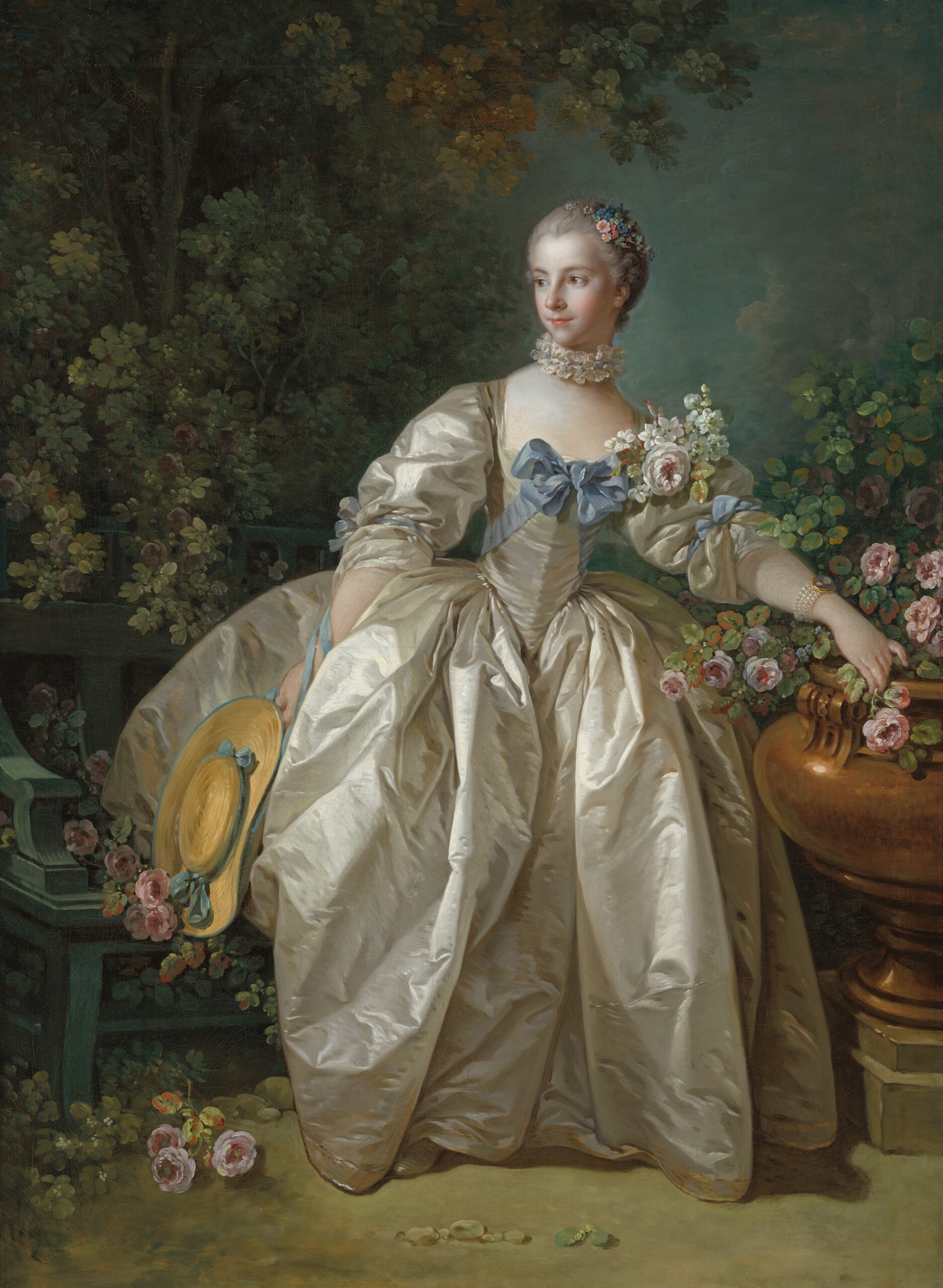
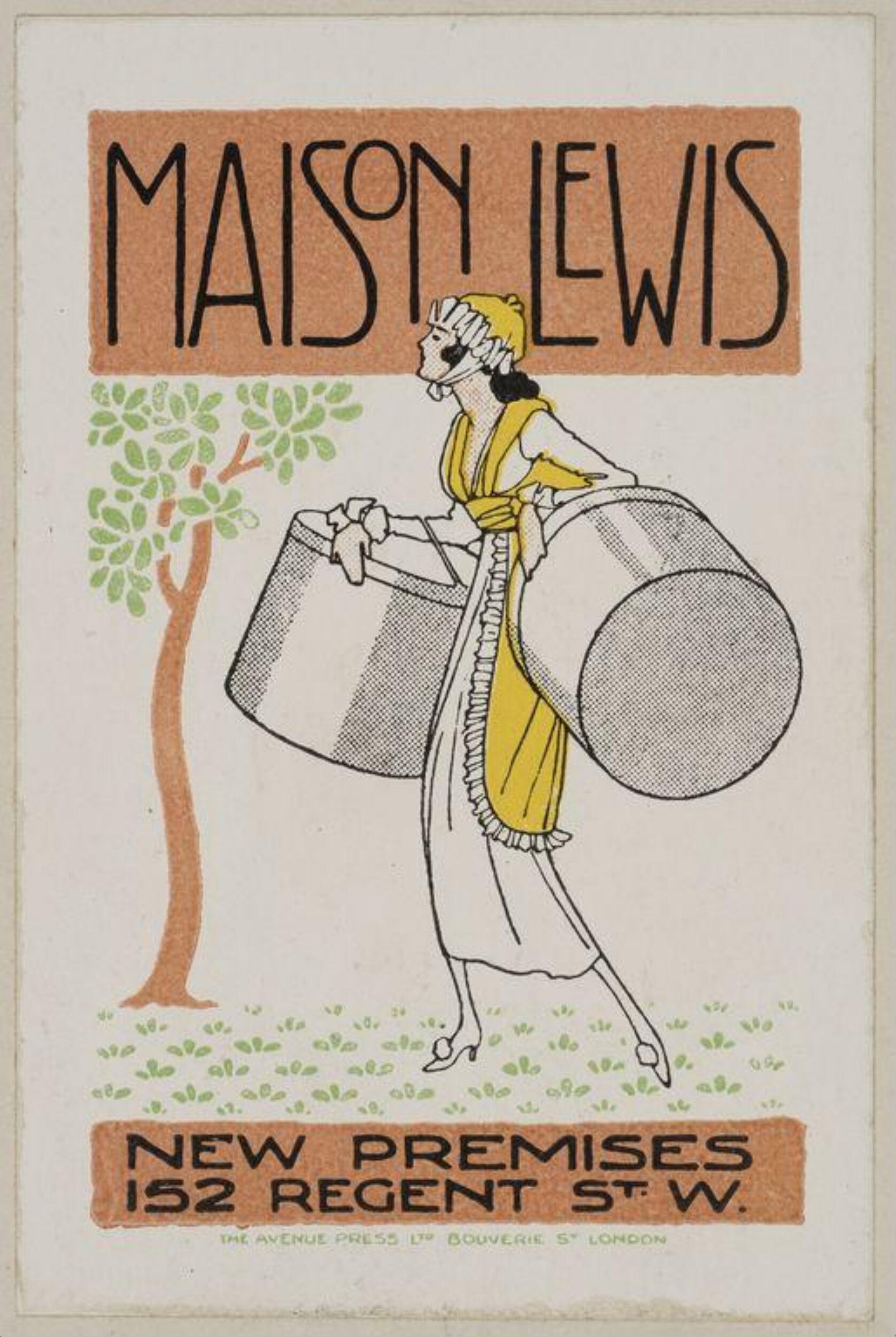
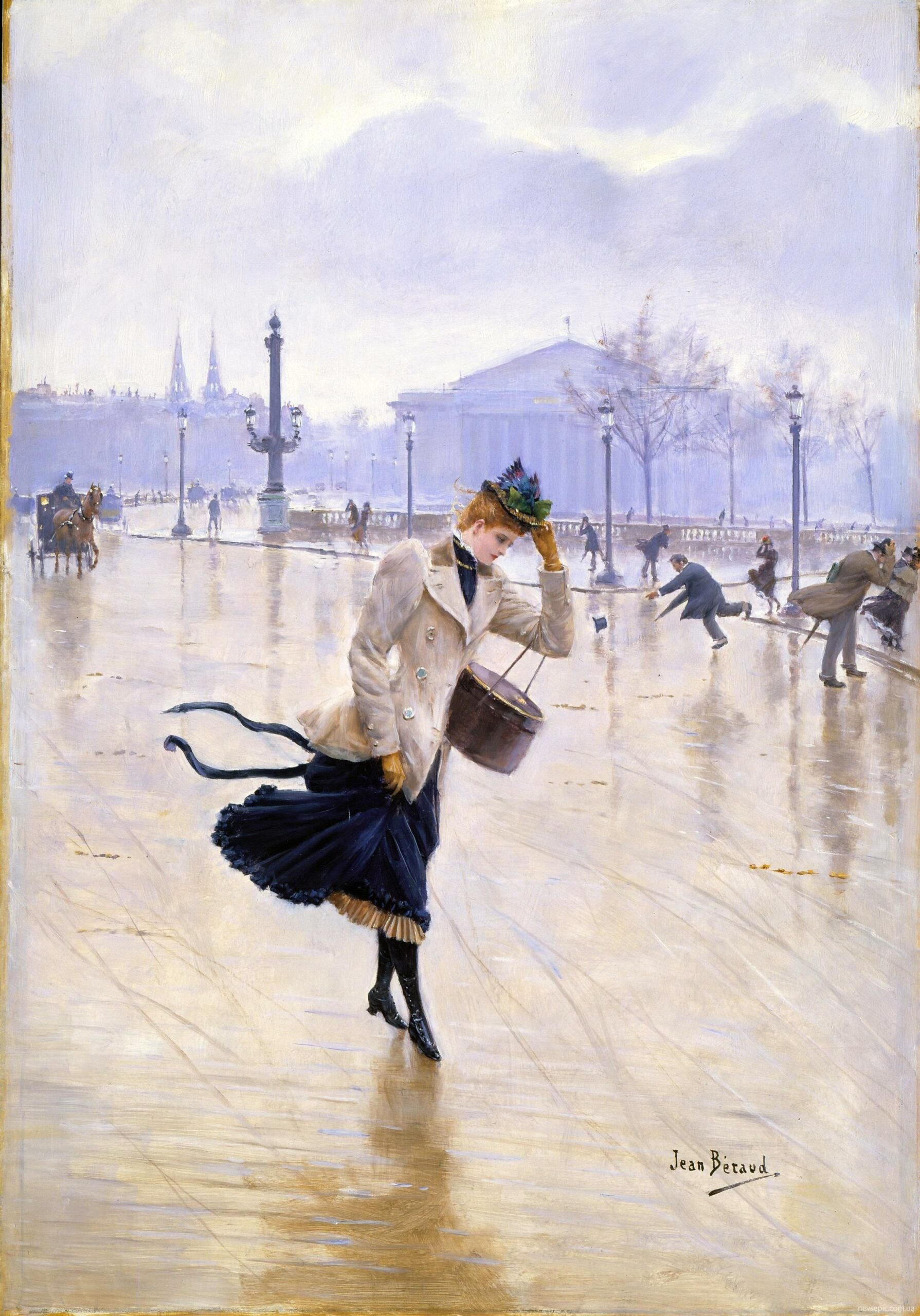
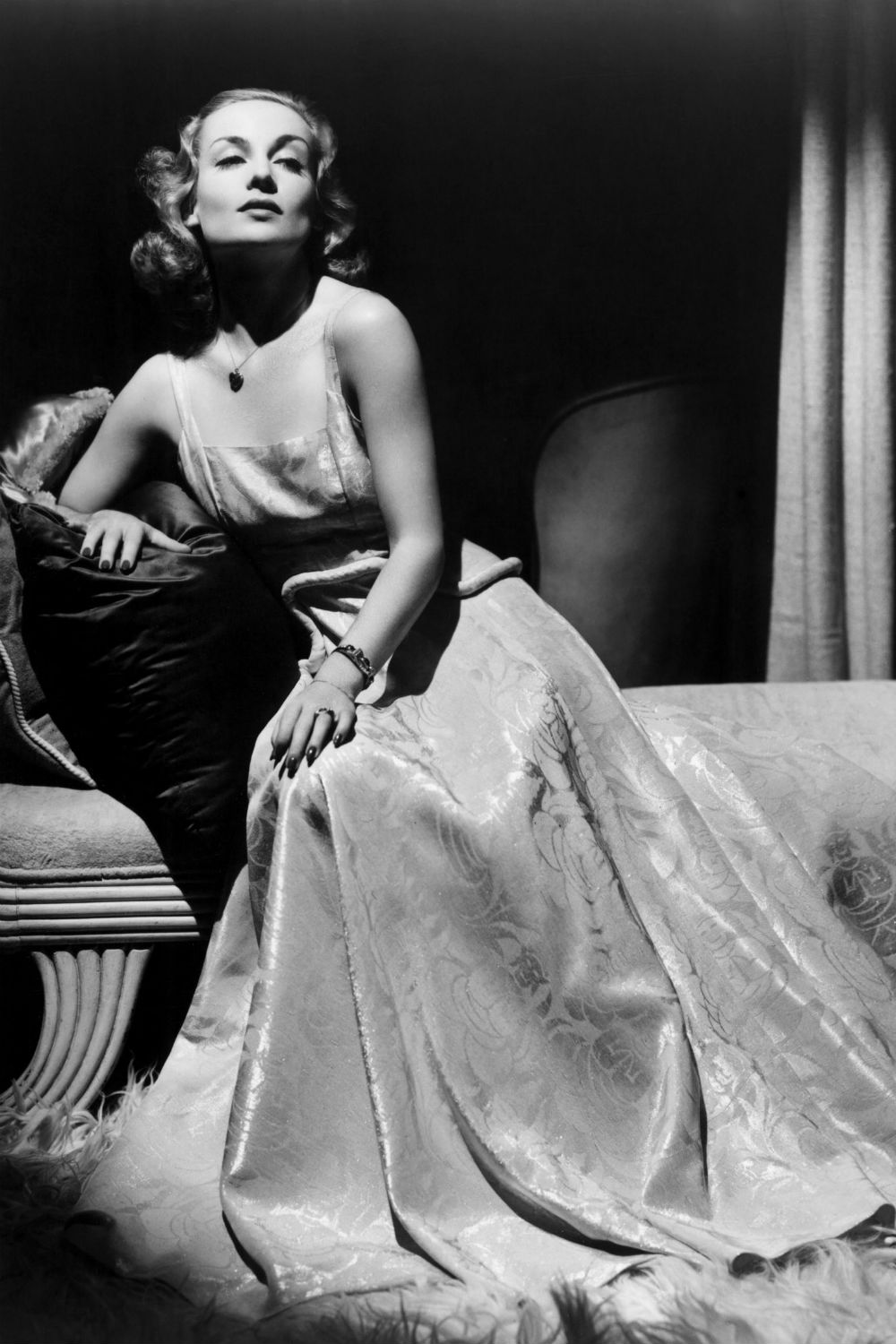
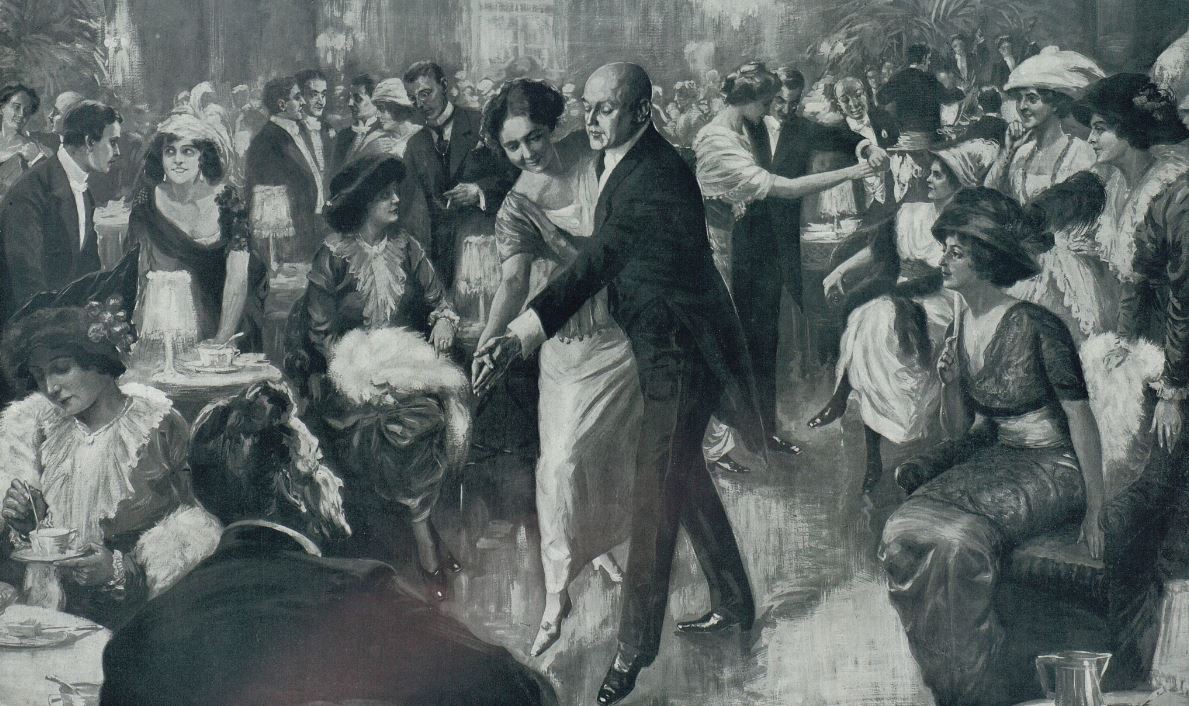
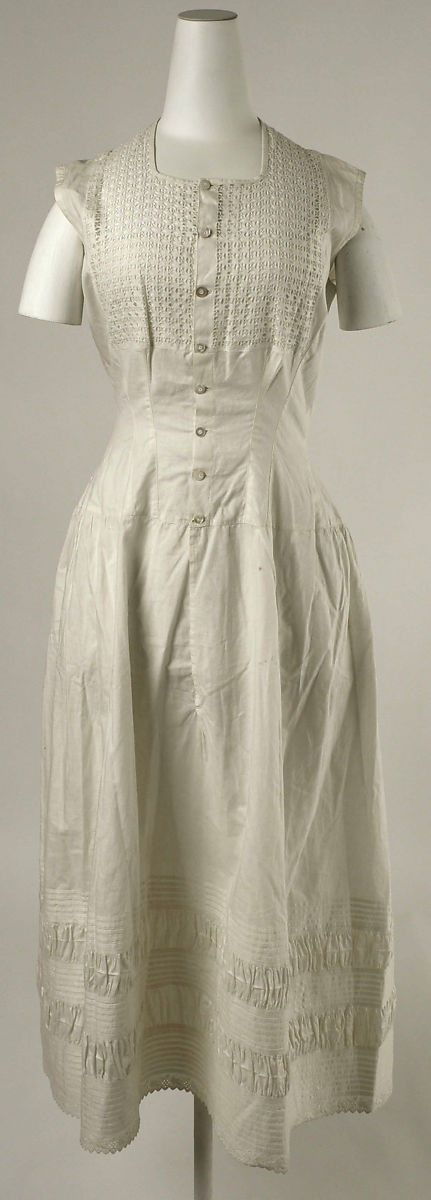
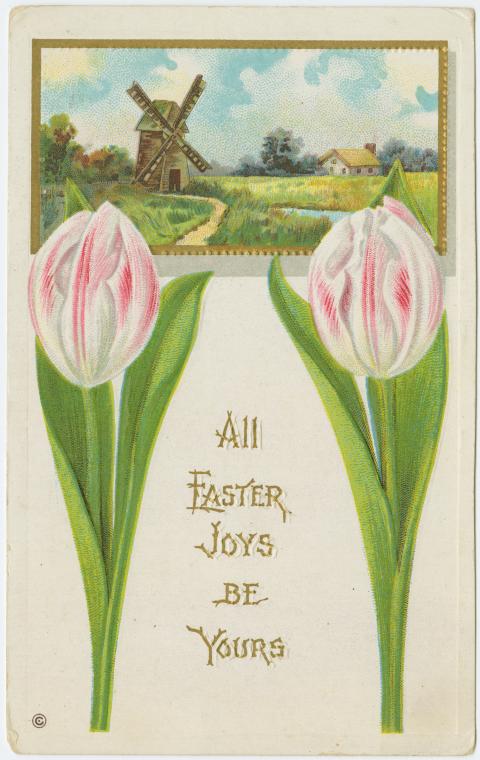
I was a fan of Edwardian styles, having peered at photos of my grandma and her sisters in a pre-WWI album my mother cherished, so when I got married in 1983 I wore an dress similar to an Edwardian tea gown and had my hair done in a Gibson! Enjoyed reading your article! Thank you.
Thanks for reading! I am so glad you loved it.
Thanks for this! 🙂 I believe that day-to-night wear are versatile pieces that can be worn for office, errands, and for dinner and drinks.
Very insightful. Went to Bloomsday event last night and wanted to know dress of the time. Learnt so much from your blog, article. Thks
Hi there!
I recently wore a lightweight white cotton high-neck gown for my wedding. It was found in a trunk belonging to my great-grandmother. I’m wondering if you would be able to date the gown for me (even an approximate date) if I were to send you a photograph of it? The dress is very mysterious and I suspect it may be an Edwardian lawn dress but the lack of pintucking and the presence of a train makes me wonder!
The hobble skirt reminds me of the modern versions: the pencil skirt and the mermaid gowns. The only difference is the hobbling takes place around the hips and thighs rather than the ankles!
Great article. The concept of missing the historical approach to a well though out collection is often what designers miss. Picking that period from which to draw a theme from magnifies your intent on runway. For example…I took the work of the late Nolan Miller whom often used capes to accent his period designs of the 1980s and added them to my garments to give that dimension of historical reference for my audience. Check out the full collection at IG #aquatico_designs too see the proof!!!